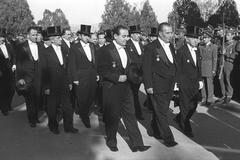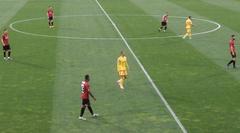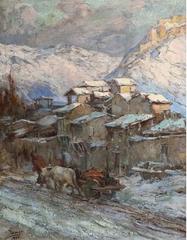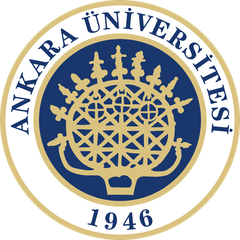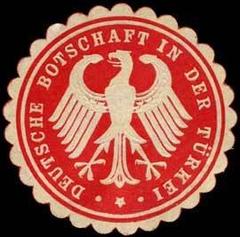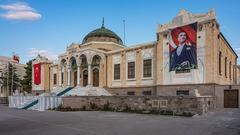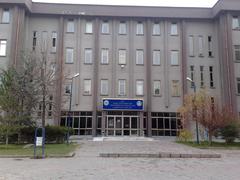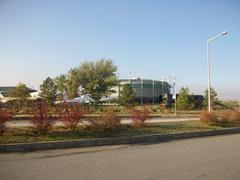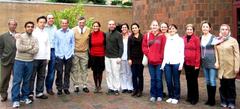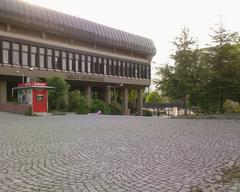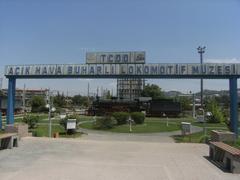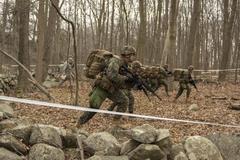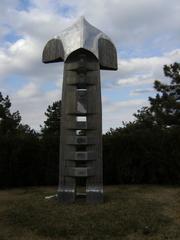Presidential Palace of Turkey Visiting Guide: Tickets, Hours & Tips in Ankara
Date: 14/06/2025
Introduction: History and Significance
The Presidential Palace of Turkey, officially the Cumhurbaşkanlığı Külliyesi (Presidential Complex) and colloquially known as Ak Saray (“White Palace”), is one of the most prominent symbols of modern Turkey. Located in Ankara’s Beştepe district, on the historically significant Atatürk Forest Farm, the complex serves as both the official residence and administrative center for the President of Turkey. Completed in 2014, it reflects Turkey’s transformation from its early republican roots to its current stature, blending deep historical symbolism with contemporary architectural ambition. With more than 1,100 rooms over a vast expanse exceeding 150,000 square meters, Ak Saray stands among the world’s largest and most opulent presidential residences (BBC News; Invest-Gate; RFE/RL).
This guide equips visitors with essential insights into the Presidential Palace’s history, architecture, visiting logistics, ticketing, accessibility, and nearby attractions. It also addresses the building’s political symbolism and the controversies that have shaped public perception. For the most up-to-date details on tours and access, consult the Presidency of Turkey’s website.
Contents
- Introduction & Significance
- Historical Evolution of the Presidential Residence
- Planning, Site Selection, and Controversies
- Architectural Design & Features
- Visitor Information: Hours, Tickets, and Access
- Accessibility & Practical Tips
- Key Attractions Within the Complex
- Nearby Sites and Photographic Spots
- Symbolism & Political Context
- Frequently Asked Questions (FAQ)
- Visit Planning Tools & Resources
- References
Historical Evolution of the Turkish Presidential Residence
When the Republic of Turkey was established in 1923, Ankara replaced Istanbul as the nation’s capital (Cornucopia). Early presidential business was conducted from modest quarters, such as the old farm school in Keçiören and the Ulus stationmaster’s house. As the new government consolidated its authority, the original Çankaya Mansion was constructed in the late 1920s and 1930s, serving as the presidential residence for nearly 90 years (Cornucopia).
By the early 21st century, the Çankaya Mansion was deemed insufficient for the evolving presidential role, prompting the decision to build a new, larger complex that would symbolize Turkey’s modern ambitions (BBC News).
Planning, Site Selection, and Controversies
The Presidential Complex was constructed on land once belonging to the Atatürk Forest Farm, established by Mustafa Kemal Atatürk as a model agricultural project and bequeathed to the nation (BBC News). The choice of this protected green space stirred considerable controversy:
- Environmentalists and opposition parties criticized the destruction of hundreds of trees and the loss of public land, citing violations of Atatürk’s legacy and environmental regulations.
- Legal challenges were raised, including court rulings against construction, but the project continued, justified by the government as a matter of national importance (Hürriyet Daily News).
The palace’s reported construction cost, exceeding $500 million, also drew public concern, particularly in light of Turkey’s economic challenges (Irish Times; VOA News).
Architectural Design & Features
Scale and Layout
The complex covers approximately 791 acres (320 hectares), with a built-up area of about 300,000 square meters, housing over 1,100 rooms. Its scale surpasses many renowned state buildings, including the White House and the Kremlin (Invest-Gate; NPR).
Architectural Vision
Designed by Mimar Kaya Kıran, the palace synthesizes Seljuk, Ottoman, and modern Turkish architectural elements. Grand porticos, domes, symmetry, calligraphy, and rich materials—such as marble and hardwood—are prominent throughout (Turroo; Archinect).
Technology and Security
The complex integrates advanced security and technological infrastructure, including a C4I bunker and anti-surveillance systems, befitting its dual role as residence and command center (Wikipedia).
Visitor Information: Hours, Tickets, and Access
Visiting Hours
- Presidential Library and Peace Park: Generally open daily from 9:00 AM to 6:00 PM.
- Main Residence & Administrative Buildings: Not open to the general public.
- Nation’s Library (Millet Kütüphanesi): Open 24/7.
- Beştepe Mosque: Open to the public outside of official ceremonies.
Always confirm the latest visiting hours and access restrictions on the Presidency of Turkey’s website.
Tickets and Entry
- Public Areas (gardens, libraries, mosque): Free of charge; no tickets required.
- Guided Tours: Occasional special tours may require advance reservation and possibly a nominal fee; these are typically announced for national holidays or special events.
- Security: All visitors must present valid ID (passport or Turkish ID), pass through security screening, and adhere to posted regulations.
Accessibility
- Fully wheelchair accessible, with ramps, elevators, and accessible restrooms throughout public areas.
- Wheelchairs can be requested at the entrance; staff provide assistance as needed.
Key Attractions Within the Presidential Complex
Main Presidential Building
The central building houses the president’s offices and ceremonial halls, visible only from designated exterior viewpoints (RFE/RL). Access is highly restricted.
Nation’s Library (Millet Kütüphanesi)
Turkey’s largest library, open 24/7, features over 4 million books and extensive digital resources. It offers reading rooms, exhibitions, and cultural events (RFE/RL).
Beştepe Mosque
A modern mosque inspired by Ottoman architecture, accommodating up to 3,000 worshippers. Open to the public except during official functions (RFE/RL).
Peace Park and Gardens
Expansive landscaped gardens and walking paths, open to the public and ideal for relaxation and photography (Travellers Worldwide).
15 July Martyrs’ Monument
A dramatic 31-meter monument commemorating the victims of the 2016 coup attempt.
Nearby Attractions and Photographic Spots
Enhance your visit by exploring these nearby Ankara historical sites:
- Anıtkabir: Atatürk’s mausoleum, a monumental complex central to Turkish national identity.
- Museum of Anatolian Civilizations: Home to world-class archaeological collections.
- Atatürk Forest Farm: A public green space adjacent to the palace.
Photographers will appreciate the palace’s gardens, exterior architecture, and sunset views.
Symbolism & Political Context
The palace is a powerful statement of Turkey’s shifting identity and political direction. Its neo-Ottoman architecture reflects a conscious embrace of imperial heritage, while its location in Ankara, the republican capital, symbolizes the blending of Turkey’s diverse past with its contemporary aspirations (OpenEdition Journals). The palace’s scale and design are intended to project national pride and the country’s evolving role on the world stage (VOA News).
Frequently Asked Questions (FAQ)
Q: Can I tour the main interior of the Presidential Palace?
A: No, public access is restricted to exterior gardens, the library, and mosque. Occasionally, special guided tours are offered during public holidays or events.
Q: Are tickets required?
A: Public areas are free. Guided tours, if available, may require advance reservation.
Q: Is photography allowed?
A: Permitted in public outdoor areas, library, and mosque. Prohibited inside administrative areas.
Q: How do I reach the complex?
A: The Beştepe neighborhood is accessible by metro (Batıkent Line, Beştepe stop), city buses, taxis, or car. Parking and taxi drop-off are available.
Q: Is the complex accessible for visitors with disabilities?
A: Yes, with ramps, elevators, and accessible restrooms throughout.
Q: What should I wear?
A: Dress modestly, especially when visiting the mosque (headscarves for women, no shorts for men).
Practical Tips for Visitors
- Advance Planning: Check the official website for announcements about open days and tours.
- ID Required: Bring your passport or Turkish ID.
- Guided Tours: Opt for these if available for deeper context.
- Combine Visits: Pair your trip with Anıtkabir or Ankara Castle for a richer experience (Travellers Worldwide).
- Best Time to Visit: Spring and autumn offer the most pleasant weather.
Visit Planning Tools & Resources
- Audiala App: Download for interactive maps, audio guides, and real-time updates about the palace and Ankara’s historical sites.
- Official Information: Presidency of Turkey
Summary & Recommendations
The Presidential Palace of Turkey is a testament to the nation’s evolving identity, blending republican heritage with modern grandeur. While access to the main residence is limited, the complex’s public spaces—such as the Peace Park, Nation’s Library, and Beştepe Mosque—offer rich experiences. Nearby Ankara sites like Anıtkabir and the Museum of Anatolian Civilizations complement the visit, ensuring a comprehensive journey through Turkey’s past and present (BBC News; RFE/RL; Irish Times).
Plan ahead, respect security and dress codes, and use official resources for a smooth and insightful experience. The Audiala app is recommended for timely updates and interactive guides.
References
- BBC News
- Invest-Gate
- RFE/RL
- Irish Times
- Cornucopia
- Virtual Globetrotting
- Wikipedia
- Travellers Worldwide
- Tourstoturkey.net
- Turroo
- Archinect
- OpenEdition Journals
- VOA News
- Hürriyet Daily News
